I den katolske bønneboken fra 1944 står det flere korsveiandakter, men først står det følgende innledning om korsveien:
Via Crucis, korsveien, er den vei Frelseren gikk fra domhuset hos Pilatus til Golgata. Fra de eldste tider av gikk de kristne denne vei til minne om Jesu lidelse. Da det ikke mer var mulig å komme til det Hellige Land og gå den virkelige korsvei, ble det rundt om i kirkene og andre steder, satt opp 14 stasjoner til minne om korsveien. Korsveiandakten er m.a.o. en av de eldste andaktsøvinger i kristenheten. En betrakter Jesu lidelse; men noen særlig bønn er ikke foreskrevet. Det som står her, er til rettledning.
Deretter kommer første forslag til korsvei. Vi ser at den er ganske lik måten det gjøres på i vår tid (det første korsveiforslaget har ikke bibeltekster, men det har noen av de andre), bortsett far at avslutningene ved hver stasjon er grundigere, med både Fadervår, Hill deg Maria, Ære være og bønn for de avdøde. (Det er også slik i de tradisjonelle tidebønnene, at hver eeneste bønnetid avsluttes med bønn for de avdøde. Hvorfor er dette blitt borte, tro?)
Innledningsbønn.
Kjærligste Jesus, du er den uendelige godhet og miskunn, og jeg elsker deg mer enn alt annet. Av hele mitt hjerte angrer jeg at jeg har krenket deg med mine synder, og som et tegn på min anger og min vilje til soning for synden, ofrer jeg deg denne korsveiandakt.
Gi meg nåde til å minnes-din vei til Golgata, så jeg følger etter deg her på jorden og til sist når fram til å få del med deg i din herlighet. Amen.
1. Jesus blir dømt til døden.
Pr.: Vi tilber deg Kristus og lovpriser deg!
M.: Fordi du med ditt hellige kors har frelst verden!
Jesus, min Frelser, uendelig er den kjærlighet du viser mot oss da du bøyer deg for den urettferdige dødsdom. I sannhet, du som ikke visste av synd, «er blitt gjort til synd for oss, for at vi i deg skal bli rettferdige for Gud». Med våre synder har vi ‘foraktet og forlatt deg, derfor blir du aktet for ingen ting og ofret.
Inderlig angrer jeg og avskyr synden, som er årsak til alt dette, angrer den av kjærlighet -til deg, min Frelser. Og jeg ber deg: Jesus, miskunn deg over meg. Gi meg nåde til å omvende meg, så jeg kan leve og dø i din kjærlighet. Amen.
Fader vår … Hill deg Maria … Ære være …
Pr.: Miskunn deg over oss, Herre!
M.: Miskunn deg over oss!
Pr.: De avdødes sjeler hvile ved Guds miskunn i fred.
M.: Amen.
…. …
14. Jesus blir gravlagt.
Pr.: Vi tilber deg Kristus og lovpriser deg!
M.: Fordi du med ditt hellige kors har frelst verden!
Jesus, trofaste Gud. Du lovte fedrene: «Av dødsrikets vold vil jeg fri dem ut, fra døden vil jeg gjenløse dem.» (Hos. 13, 14.) Derfor døde du på korset og steg ned i dødsriket. Du ville ved døden gjøre ham maktesløs som har dødens velde, dvs. djevelen, og fri ut dem som av dødsfrykt var i trelldom hele sin livstid. (Hebr. 2, 14.)
I fred hviler du nå i en ny grav, som kjærlighet har gitt deg. I alt ville du bli oss lik; fattig ville du være selv i døden. Ydmykt tilber jeg ditt avsjelede legeme og takker deg for din kjærlighet, som er sterkere enn døden. I tillit til denne din kjærlighet ber jeg deg om den største av alle nådegaver: Å få ta mot deg i mitt hjerte, så jeg kan ferdes i deg med inderlig takk, stadfestet i min tro, mitt håp og min kjærlighet.
Jesus, la meg leve for deg! La det siste jeg trår etter her i livet, være å påkalle ditt hellige navn, så jeg må dø med deg, for atter med deg å stå opp til det evige liv. Amen.
Fader vår … Hill deg Maria … Ære være …
Pr.: Miskunn deg over oss, Herre!
M.: Miskunn deg over oss!
Pr.: De avdødes sjeler hvile ved Guds miskunn i fred.
M.: Amen.
Deretter avsluttes korsveien med følgende bønner:
Slutningsbønn.
(Foran alteret.)
Allmektige, evige Gud, miskunnsrike Fader. Du har villet la din Enbårne Sønn ta på seg vårt kjød. Bøyd under korsets tunge byrde har han gått foran oss på livsveien for å gi oss et forbilde på ydmykhet, lydighet og tålmod.
Gi oss nåde så vi villig tar hans evangeliums milde åk og forsakingens kors på oss og følger etter ham som trofaste disipler. La oss så engang i herlighet stå opp med ham og få høre de glederike ord: «Kom hit, dere min Faders signede. Arv riket han har holdt rede til dere fra verden ble skapt. Du som med Sønnen og den Hellige Ånd hersker, Gud fra evighet og til evighet. Amen.
Forbønner.
Kjærligste Frelser og trofaste hyrde for våre sjeler. Du har gitt ditt liv for oss og har sagt: «Når jeg blir opphøyd fra jorden, vil jeg dra alt til meg.»
Oppfyll nå ditt allmaktsord og dra til deg alle som ennå ikke kjenner deg. Se i nåde ned til din hellige Kirke. Den er vingården som din høyre har plantet. Vern og øk den, driv ut all villfaring og all splid, samle hyrdene og deres hjord i kjærlighet og enhet.
Gi nådig alle folk og nasjoner fred og enighet. Opplys riksstyrene, så de alltid har din lov og vilje for øye. Gi oss alle velferd for sjel og legeme, de vantro og vrangtro nåde til å erkjenne og følge frelsens sannheter. Styrk de rettferdige i det gode, gi synderne omvendelse, alle som har gjort godt mot oss, de himmelske goder, de som ligger for døden, nåde til å fare herfra i din fred og de avdødes sjeler den evige hvile. Amen.
(Fader vår …. Hill deg Maria … Ære være Faderen … i vår hellige far, pavens mening.)
Les hele denne korsveien her (pdf-fil).
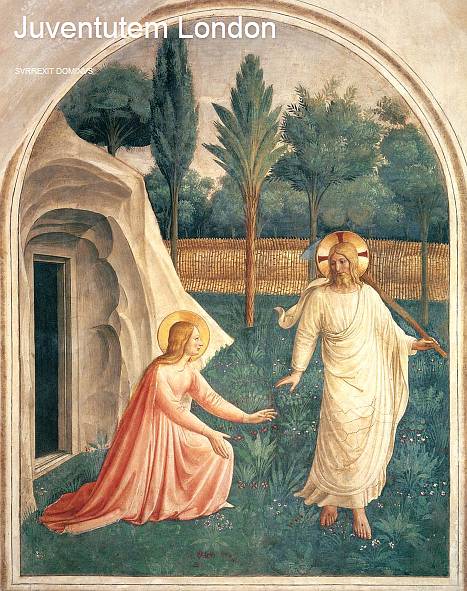

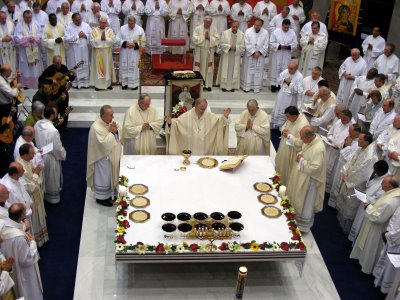
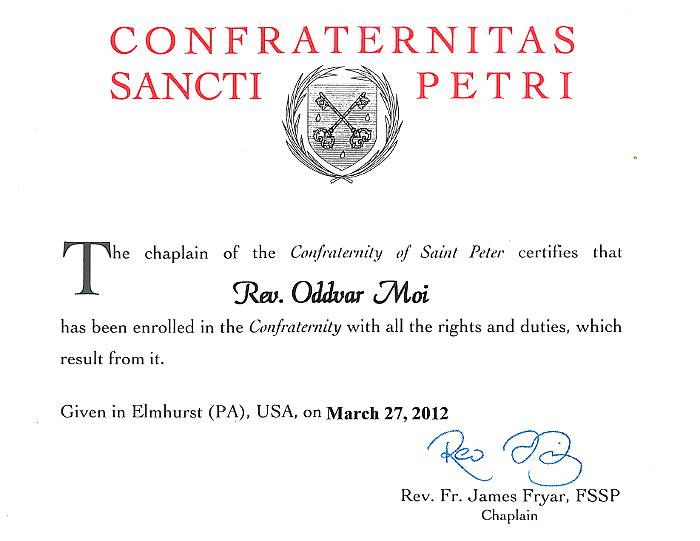
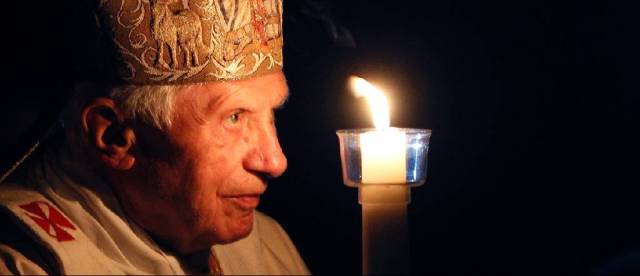
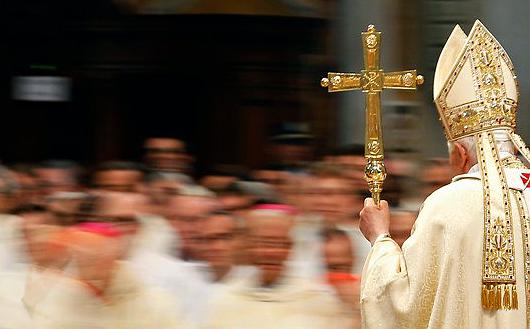

 DIVINE PROVIDENCE is not without her sense of irony. For whilst it was both a joy and a consolation to come to know and love the usus antiquior, the more ancient liturgy of the Roman Rite, as celebrated under the indults; granted during the reign of the much-loved Pope John Paul II, one could never quite escape the feeling that one was ever-so-guilty of a clandestine activity about which one could not really speak in polite, mainstream ecclesiastical company, let alone in the presence of the hierarchy.
DIVINE PROVIDENCE is not without her sense of irony. For whilst it was both a joy and a consolation to come to know and love the usus antiquior, the more ancient liturgy of the Roman Rite, as celebrated under the indults; granted during the reign of the much-loved Pope John Paul II, one could never quite escape the feeling that one was ever-so-guilty of a clandestine activity about which one could not really speak in polite, mainstream ecclesiastical company, let alone in the presence of the hierarchy.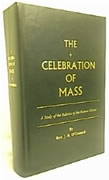 A priest is ordained to offer sacrifice to God. His chief duty, his dearest privilege, is to celebrate Mass. The offering of the Christian Sacrifice is a divine act, but it is done in an entirely human way. Its essential elements were determined by the Chief Priest – who is at the same time the august Victim – our Lord Jesus Christ Himself, but the setting in which this sublime act should take place, the rite in which it was to be enshrined for all time, was left to His Church to settle. And the Church, guided by the Holy Spirit, has in the course of centuries created this rite, and has fixed in detail the manner in which Mass is to be celebrated.
A priest is ordained to offer sacrifice to God. His chief duty, his dearest privilege, is to celebrate Mass. The offering of the Christian Sacrifice is a divine act, but it is done in an entirely human way. Its essential elements were determined by the Chief Priest – who is at the same time the august Victim – our Lord Jesus Christ Himself, but the setting in which this sublime act should take place, the rite in which it was to be enshrined for all time, was left to His Church to settle. And the Church, guided by the Holy Spirit, has in the course of centuries created this rite, and has fixed in detail the manner in which Mass is to be celebrated.